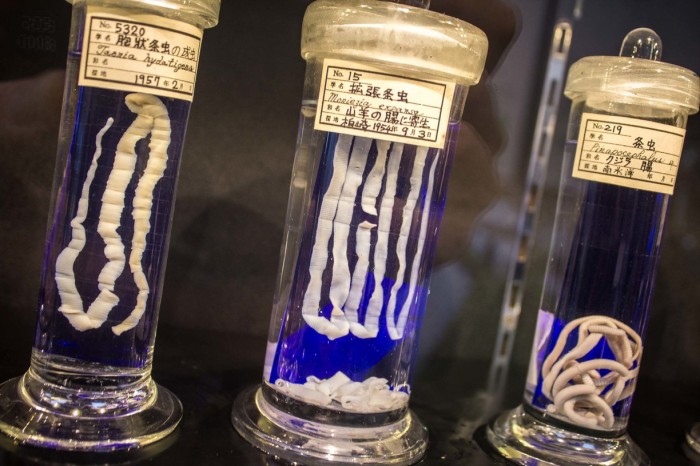Among the unusual museums of the world, of course, is the Parasitological Museum in Tokyo, which, due to its uniqueness, has become quite a popular attraction in the Land of the Rising Sun. According to the author of the publication in the journal “Culturology”, this museum can break all conceivable records in terms of the number of unpleasant impressions from viewing the most disgusting parasites that exist in wildlife in general and are capable of being in the human body, in particular.
In fact, the Parasitological Museum is nothing more than a small research center that studies a wide variety of parasites. Interest in this problem is due to the fact that the Japanese constantly eat raw fish, in which numerous parasites or their larvae can persist.
The purpose of creating an extraordinary exhibition, founded by MD Satoru Kamegai back in 1953, is not to make a profit, but to warn people about the danger that parasites bring with them to the body. That is why a visit to the Parasitological Museum, which displays about 45 thousand different worms and about 300 other parasites, is free for all visitors without exception.

Photo: kulturologia.ru/www.trover.com
At the entrance to the museum, visitors are greeted by a sign with the rules of conduct. In general, they are standard for all museums, but given the specifics of this institution, the warning not to eat or drink in the halls is surprising. It is unlikely that anyone would want, even after the end of the tour of the museum, to go to refreshment in the nearest cafe.
Apparently, in order not to shock the inquisitive visitor from the threshold, the first floor offers an initial acquaintance with the science of parasitology and the most diverse types of parasites. The main place in the exposition is occupied by maps, which clearly show in which region there is a risk of infection with one or another type of parasites. And, of course, there are just a great many different parasites around, starting with banal ticks and ending with huge worms. All of them are in special flasks in alcohol form. On separate interactive stands you can see diagrams with complete information about unwanted “neighbors” of fish, animals and birds. The second floor of the museum has a narrower specialization. And the exhibits here cause far from positive emotions. All kinds of parasites that can live in a person or animal can be seen in the most horrifying detail.
At the “Important Human Parasites” stand, you can clearly see in which organs what types of parasites can start. And next to see exhibits and photographs depicting the consequences of the reproduction of parasites in various organs of people and animals. For example, a huge tapeworm amazes visitors with its size. This giant worm, 8,8 meters long, came out of a perfectly normal young Japanese man. For clarity, next to the stand where this wonderful exhibit is located, a rope of exactly the same size hangs, which you can unfold and try to answer the question of how such a monster could grow in a person in just three months. Nearby there are many visual aids that demonstrate how parasites can enter the human body, and how they cycle in nature.

Photo: kulturologia.ru/www.fishki.net
It's hard to imagine that someone would wear a T-shirt with a picture of creepy parasites. However, the souvenir shop operating at the Parasitological Museum is never empty. All these unimaginable T-shirts with realistic worms, postcards with worms and other parasites, lunch bags with the image of any evil that settles in the body are in demand among tourists. As well as small key chains and pendants for mobile phones, inside of which there are real parasites in alcohol. True, some especially impressionable guests go straight to the pharmacy after visiting the museum, for antiparasitic drugs.
It is noteworthy that it took the Museum staff more than half a century to assemble this unusual collection, the source notes.
Resources: kulturologia.ru
Also read:

